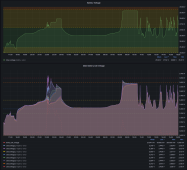FilterGuy
Solar Engineering Consultant - EG4 and Consumers
I am not sure you need the bulbs.Was thinking of a simple method of balancing the new cells. Wire all cells in parallel, but with a 12V incandescent bulb in series with each cell. Would eliminate having to manually charge each battery to a similar voltage. Any flaw with my hypothesis?

Top Balancing LiFePo4 Cells using a low cost benchtop power supply.
To get the paper, click on the orange at the top of this page. This is a tutorial with detailed steps on how I top-balance my LiFePO4 Cells using a low-cost benchtop power supply. To get the tutorial, click on the orange "Download" button...



